Amboise to Tours
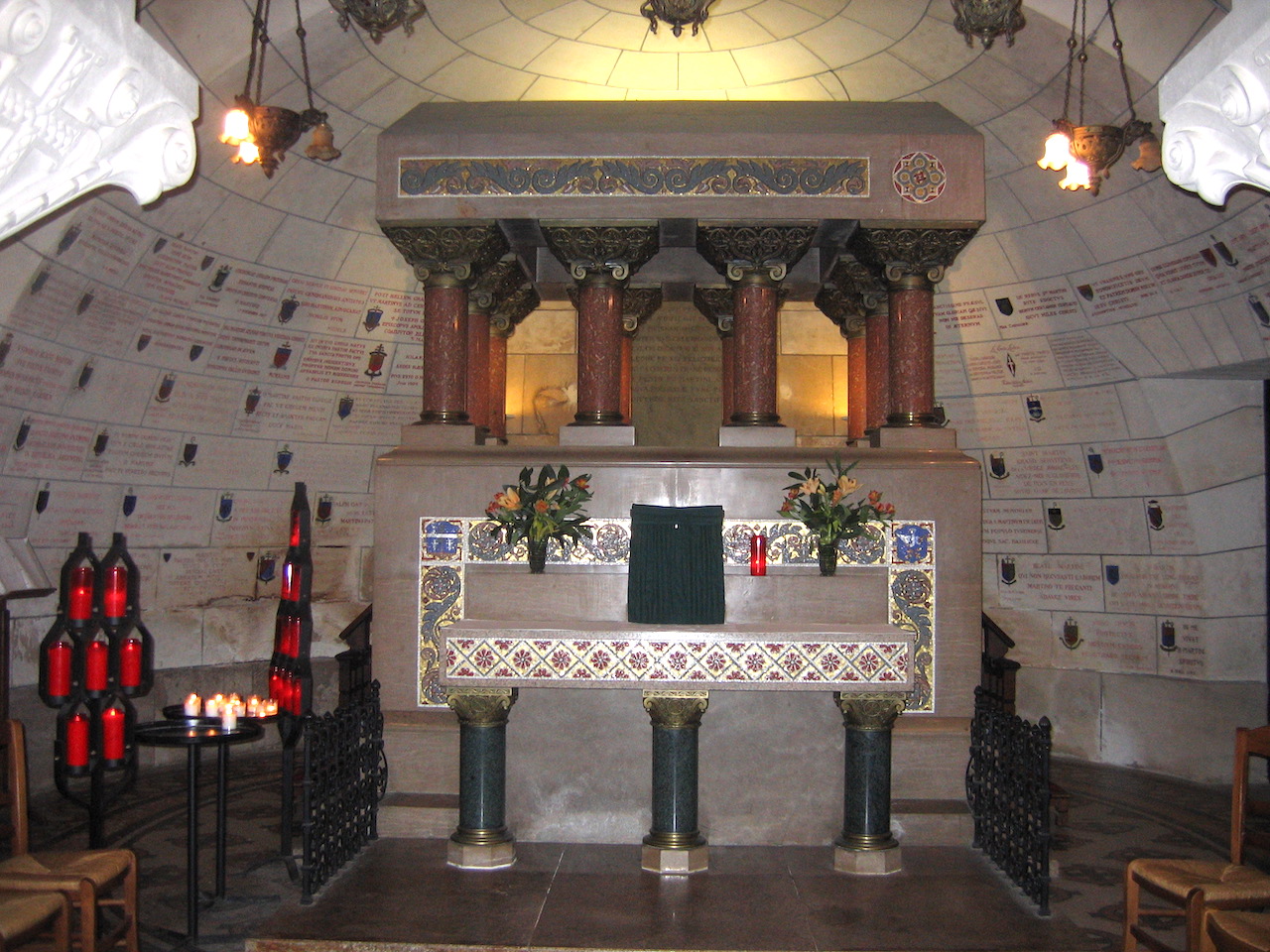
Centre-Val de Loire
8. Amboise to Tours
Medium
7h30
28,6km
+267m
-271m
Step
Embed this item to access it offline
You leave Amboise on the plateau overlooking the Loire River with its vineyards. You will cross the Loire in Montlouis-sur-Loire to continue in the vineyard of Vouvray between mansions, on the hillside with its troglodytic caves on the banks of the Loire. You will follow the monastic site of Marmoutier, monastery founded by Saint Martin, to cross the Loire and visit the Basilica of Saint Martin and the heritage of this university town with its Gallo-Roman foundations.
11 points of interest
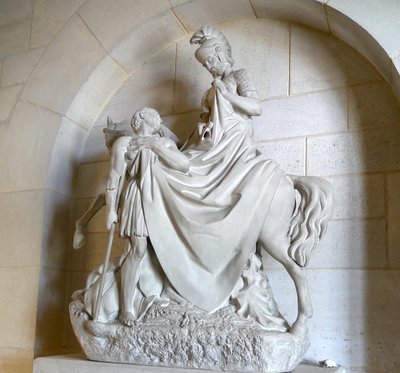
Statue de Saint-Martin dans la basilique du Bois Chenu à Domrémy-la-Pucelle - Amis saint Colomban St ColumbanSaint Martin, the apostle of Gaul (316 - 397)
His life is essentially known by the Vita Sancti Martini written by Sulpice Severo in 397. He was born in Pannonia, present-day Hungary, on the borders of the Roman Empire where his father, a senior officer in the Roman troops, was garrisoned. As usual in the Roman army he was baptized a Christian and at the age of 15 he became a soldier because Roman law obliged the sons of soldiers to enlist in the army. Sent to Gaul with his garrison and passing through Amiens, he gave half of his military coat to a beggar. In a dream, Martin learns during the night that it was Christ who made this request to him.
In 356, he leaves the army to join the community of Saint Hilaire in Poitiers. With him, he founded the first monastery of the Gauls, at Ligugé, in Poitou. It is there that he will be kidnapped by the inhabitants of Tours who make him their bishop. Saint-Martin founded the monastery of Marmoutier in Tours and went to evangelize the pagans throughout Gaul. Today more than 500 places in France are under the name of Saint-Martin. But also throughout Europe.
In the 21st century the European Cultural Centre Saint-Martin de Tours, works to the knowledge and dissemination of Martinian heritage. In 2005, Un Chemin de Saint-Martin - Via Sancti Martini - was born.
Discover Via Sancti Martini
More information: Wikipedia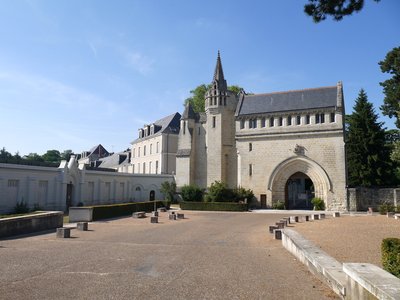
Porte de la Mitre accès à l’école privée - Amis saint Colomban St ColumbanMarmoutier Abbey in Tours
Although it is difficult to locate the site of Martin's first burial place, probably in his monastery? In this hypothesis, Saint Columban prayed in front of Saint Martin's tomb in 610, as recounted by Jonas de Bobbio in the Vita Columbani written around 640.
The abbey was founded by Martin of Tours, perhaps as early as 372. The abbey reached its peak in the Middle Ages and its dependencies extended over much of medieval France and as far as England. In 1562, at the beginning of the Wars of Religion, the abbey was plundered by the Protestants. It did not recover from this event, despite the guardianship of the Congregation of Saint-Maur. It was dismembered during the French Revolution. Bought back by the Sisters of the Sacred Heart, the surviving buildings were restored and others were built to house a private educational institution still in operation in the 21st century.
The part of the site housing the remains of the former abbey was bought by the city of Tours in 1981 and archaeological excavations have been underway since 2004.
Many popes came to Tours in the 11th and 12th centuries. Most of the time they stayed in the Abbey of Marmoutier which is directly under the authority of the Papacy. In March 1096 Pope Urban II came to facilitate the implementation of the Gregorian reform and consecrated the new church of Sainte-Croix. He preached the first crusade before the Count of Anjou and the nobility of Touraine. In 1119, Pope Calixte II stayed in the abbey and convinced Count Foulques d'Anjou to go on crusade, the latter becoming king of Jerusalem.
More information : Wikipedia
Château et musée du vin de Moncontour - Monconcourt.com CulturalMoncontour Castle in Vouvray
Vine and Wine Museum
In the old cellars of Château Moncontour there is a treasure hidden!
Come and discover a unique collection of tools and objects related to heritage, vine growing and wine making. The world of vines and wine will no longer hold any secrets for you!
Nearly 3,000 preciously preserved and lovingly collected items are arranged in a fun and educational way in a troglodytic cellar. In this place steeped in history, you will discover the evolution of tillage over the last few decades and enrich your knowledge of the terroir of the Vouvray Appellation d'Origine Contrôlée, in the Loire Valley vineyards.
Site internet du musée de la vigne
Le château de Tours - Amis saint Colomban HistoricalThe medieval castle in Tours
The castle of Tours, is located on the banks of the Loire River in the oldest district of Tours, close to Saint Gatien Cathedral, built on the remains of the ancient city from which Tours derives its origin. Despite the extent of its foundations partially revealed by the excavations of the 1970s, it leaves the very modest trace of a medieval county castle of the 11th century, as it was modified and enlarged in the 13th and 15th centuries when it acquired the status of royal residence. Almost completely destroyed in the 18th century, its two remaining towers are accommodated with a new building used by the army from the Revolution onwards.
Façade de la cathédrale Saint-Gatien de Tours - Amis saint Colomban TouristSaint-Gatien Cathedral in Tours
The cathedral was built on the site of the building which in the 4th century was the ecclesia prima, that is to say the church of the bishop of Tours, therefore the church of Saint Martin. This first church bore the name of Saint Maurice and later the canons of the cathedral in opposition to those of the basilica gave it the name of Gatien the first on the episcopal see of Tours. The present Gothic cathedral replaces the Romanesque building built on the first church.
The present cathedral has many objects and decorations relating to Saint Martin. On the outside, a Saint Martin is depicted to the left of the portal of the north transept crosspiece. Inside, a stained glass window depicts St. Martin in the large windows of the western façade; in the nave, a St. Martin is present in the fourth ornate keystone from the west; in the choir's stained glass windows, a complete stained glass window depicts various scenes from the life of St. Martin; in the chapel of the tomb of the children of Charles VIII, a 14th century fresco depicts St. Martin's charity; in the chapel of St. Francis, the stained glass windows of the two side windows represent scenes from the life of St. Martin; in the chapel of St. Lidoire, 12th century stained glass windows from the former Basilica of St. Martin (scenes from the life of St. John, St. Andrew and St. James); in the north transept, on the north wall, on the altar of St. Martin, a large 19th century painting represents charity.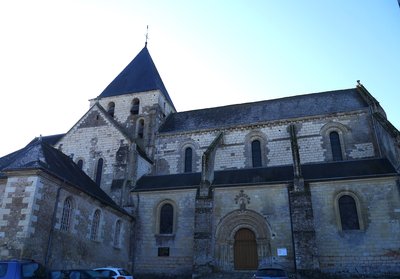
L’église collégiale Saint-Denis d’Amboise - Amis saint Colomban TouristSaint-Denis Collegiate Church, Amboise
This church is the oldest in the city. In 1107, Hugues I, Lord of Tours, had the present building built on the site of an oratory built by Saint-Martin, Bishop of Tours, in the 4th century, himself built on a pagan temple. The edifice was built in three campaigns: choir and transept in the middle of the 12th century; nave and side aisles at the end of the 12th century; doubling of the south side aisle in the 16th century. Collapsed in the 18th century, the bell tower had to be rebuilt at the same time. The chevet consists of a five-sided apse and two apsidioles which replaced those of the Romanesque period in the 15th century. The cast iron choir gates come from the art foundry in Pocé-sur-Cisse. In 1498 the marriage of Louis XII with Jeanne de France was annulled.
The church is open to the public during the summer season.
Tour horloge d’Amboise - Amis saint Colomban HistoricalClock Tower, Amboise
Tower built in the 15th century on an old town gate built earlier. The work, begun in 1495, was completed around 1500. On the ground floor is the 13th century barrel vault, under which the street passes. Above it rise two square floors, then a four-sided attic that ends in a hexagonal bell tower. On the town side, large mullioned windows illuminate these floors, which are accessed via a turret stairway.
Façade de l’église Saint-Laurent à Montlouis-sur-Loire - Amis saint Colomban TouristSt. Lawrence Church in Montlouis-sur-Loire
The first building around which the inhabitants gathered was a religious building. It was Saint Perpet, bishop of Tours at the end of the 5th century, who founded a chapel in Montlouis dedicated to Saint-Laurent. This modest construction was replaced, at the beginning of the 12th century, by a stone building. The choir vaulted at the end of the oven and the base of the bell tower remain from this period. The church was enlarged in the 15th and 16th centuries. In 1870, then in 1902, during the restoration and embellishment work, the architects Guérin and then Brisacier did not hesitate to establish warhead vaults inside the church. It was in 1881, that the town council decided in its meeting of 18 February 1881 to inscribe the republican motto on the facade of the church, which usually decorates the town halls. The reasons for this inscription and whether this decision was the source of much debate are not known for sure. In 1880, the motto "Liberty, Equality, Fraternity" was officially adopted and it was soon to decorate the pediments of public buildings. This movement of republican inscriptions was renewed after the 1905 law on the separation of church and state.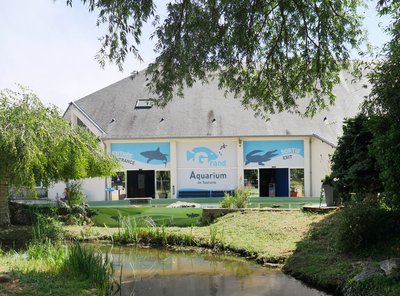
L’aquarium de Touraine à Lussault-sur-Loire - Amis saint Colomban TouristAquarium de Touraine at Lussault-sur-Loire
How about a fabulous journey through the richness of the world's oceans?
With themed rooms with original decorations, the Grand Aquarium de Touraine takes you on a surprising journey where you can admire different kinds of live fish in freshwater and saltwater aquariums.
As a family, you will be amazed by the tunnel allowing you to admire the great species of our regions, sturgeons, pikes, pike, pike-perch... The tropical fresh water will plunge you into the universe of piranhas, caimans, archers... Without forgetting the electric eel show and the extremely rare group of American spoon fish.
The Aquarium is located on the edge of Via Columbani.
Site of the Grand Aquarium of Touraine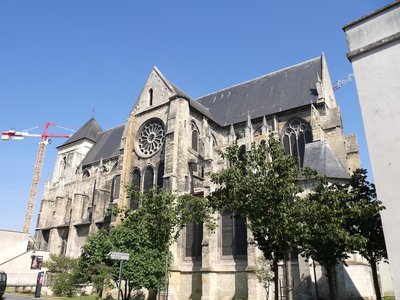
Vue d’ensemble de l’église Saint-Julien de Tours - Amis saint Colomban TouristSaint-Julien Church in Tours
The abbey church of Saint-Julien de Tours is the church of a former Benedictine abbey whose origins date back to the 6th century; it dates mainly from the 13th century.
At the end of the 6th century until the 9th century an abbey was built and developed around the square tower (still visible today). It has a cloister, cellars (which housed the estate's crops), and a library.
For five centuries, destruction and reconstruction followed one another. In 853, the abbey is destroyed by the Normans, it is rebuilt in the 10th century. A hurricane caused the nave of Saint-Julien to collapse in 1224. The church is once again rebuilt and built in its present form.
Observe the restored Romanesque capitals of the entrance porch. The church is closed.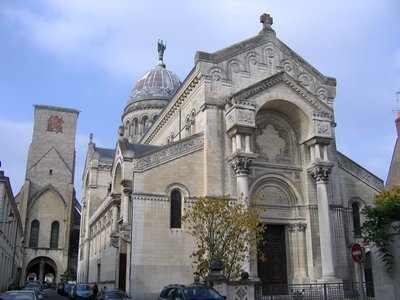
La basilique Saint-Martin de Tours et la Tour Charlemagne - Amis saint Colomban TouristSaint Martin's Basilica in Tours
The basilica of Saint-Martin de Tours houses, in its crypt, the tomb of Martin de Tours.
The former collegiate church of Saint-Martin de Tours, which dated mainly from the 11th century, was disused, vandalized and transformed into a stable in 1793, then demolished following the collapse of the vaults in 1797, only two towers being preserved. The present basilica, much more modest, was built between 1886 and 1902 in the neo-Byzantine style.
The body of Saint Martin, who died in Candes (you will pass through this town on your next stop), was transported by boat to Tours and modestly buried on 11 November 397, three days after his death, in a Christian cemetery outside the town, on the Roman road heading west. According to Gregory of Tours, Bishop Brice had a wooden building built in 437 to house the tomb and mantle (cope) of Martin, originally called the Chapel. Seeing the influence of this sanctuary, Bishop Perpetus built the first basilica in the place where Martin's tomb is located. It was dedicated on July 4, 470, ninety-nine years to the day after St. Martin's accession to the episcopate of Tours.
More info: Wikipedia
Description
In front of the entrance of Saint-Florentin church, turn right on rue Joyeuse, second street on the right, rue Nationale.
- Jonction rue Bretonneau, cross the square, rue Saint-Denis pass behind the church Saint-Denis, exit the subdivision, left rue de Choiseul, right, avenue de la Grille Dorée
- Jonction de Chandon, left Avenue de Chandon, first left, straight ahead, route de l'Ormeau Vigneau, stay on your left, route des Montils then Chemin des Montils, D283 for 3 500 metres
- Suburb of Husseau continue straight on route de Volagre, at La Barre, straight on, rue de Chapitre, at Montlouis-sur-Loire, rue Madeleine Vernet
- Rue Maréchal Foch, on the right, rue Abraham Courtemanche, on the left, cross the church square, rue du cygne, on the right, rue Christophe Plantin, on the left quai de la Loire
- Pass under the railway line, take the stairs on the left to go up on the path crossing the Loire along the railway line, be careful in strong winds when a train passes in spite of a barrier separating you from the track, on the right bank, go down the access path to the old station, first path on the left to go along the Loire, follow the dirt track along the RN 152.
- Right at the crossroads with D 46, avenue Léon Brule, third street on the left, rue du petit coteau, right at the roundabout left rue des Patis, first street on the left, rue Montauran, second street on the left, rue de Sens, rue du Peu Boulin, C15
- Go back down on the banks of the Loire in rue des Clouets, cross Quai de la Loire slightly to your left and take a dirt road on the river bank.
- After Mirabeau bridge, take the pedestrian bridge to cross the Loire, straight ahead, rue Lavoisier, second street on the right, rue de la Scellerie, cross the tramway street, rue des Halles, you arrive at the Saint-Martin basilica.
- Departure : Saint-Florentin Church, Placette Florentin, 37400 Amboise
- Arrival : Saint Martin's Basilica, 1 Rue Descartes, 37000 Tours
- Towns crossed : Centre-Val de Loire
Altimetric profile
Report a problem or an error
If you have found an error on this page or if you have noticed any problems during your hike, please report them to us here:








